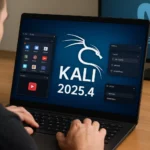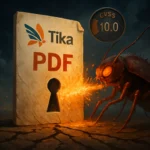CrushFTP has issued an urgent security advisory regarding a critical zero-day vulnerability designated CVE-2025-54309 that cybercriminals are actively exploiting to gain administrative access to corporate servers. This security flaw enables attackers to compromise systems through the web interface without requiring authentication credentials, posing significant risks to organizational infrastructure.
Timeline of Discovery and Active Exploitation
Security researchers first detected active exploitation attempts on July 18, 2025, though evidence suggests attacks may have commenced a day earlier. According to CrushFTP CEO Ben Spink, the vulnerability’s discovery followed an unusual sequence of events that highlights both the sophistication of modern threat actors and the unpredictable nature of software security.
In a remarkable coincidence, developers had released a patch shortly before the attacks were identified that inadvertently blocked the zero-day vulnerability. The original fix targeted an unrelated issue and disabled the rarely-used AS2 over HTTP(S) functionality by default, unknowingly preventing exploitation of this critical security flaw.
Threat Actor Methodology and Reverse Engineering
CrushFTP security experts believe that attackers conducted reverse engineering analysis of the software code to identify the vulnerability and subsequently launched coordinated attacks against systems lacking the protective patch. This incident demonstrates the advanced technical capabilities of contemporary cybercriminals and their ability to rapidly weaponize discovered vulnerabilities.
The vulnerability existed in builds released approximately until July 1, 2025, with the attack vector utilizing HTTP(S) protocols. This makes the exploitation particularly dangerous for organizations with publicly accessible file transfer servers, as it significantly expands the potential attack surface.
Affected Versions and Technical Impact
The security vulnerability affects CrushFTP versions prior to 10.8.5 and CrushFTP 11.3.4_23, released around July 1st. Attackers execute their campaigns through the software’s web interface, creating multiple entry points for potential system compromise.
The most distinctive indicator of successful compromise involves modification of default user configurations. Threat actors alter system settings in a manner that renders the configuration technically invalid while maintaining functionality exclusively for the attacker’s use, creating a persistent backdoor mechanism.
Incident Response and Recovery Procedures
System administrators suspecting potential compromise should immediately restore user configurations from backup copies created before July 16th. This remediation step is essential for eliminating unauthorized modifications and ensuring system integrity.
Primary compromise indicators include unexpected modifications to default user accounts and anomalous activity patterns in web interface logs. Organizations must conduct comprehensive audits of all user configurations to identify potential security breaches and implement appropriate containment measures.
Enterprise Security Implications and Threat Landscape
While current reports have not confirmed data theft or malware distribution through this vulnerability, secure file transfer solutions represent high-value targets for ransomware operators and advanced persistent threat groups. These platforms typically contain sensitive corporate data and provide access to critical business systems.
Historical precedent demonstrates the severe consequences of similar vulnerabilities. The Clop ransomware group previously exploited comparable security flaws in widely-deployed enterprise solutions including MOVEit Transfer, GoAnywhere MFT, and Accellion FTA, resulting in massive data breaches affecting thousands of organizations worldwide.
This incident underscores the critical importance of maintaining current security patches for file transfer systems and implementing comprehensive defense-in-depth strategies. Organizations should not only deploy the latest security updates but also establish continuous monitoring protocols to detect compromise indicators, particularly given the increasing focus of cybercriminals on enterprise file sharing infrastructure. Regular security assessments and incident response planning remain essential components of effective cybersecurity posture in today’s threat environment.






